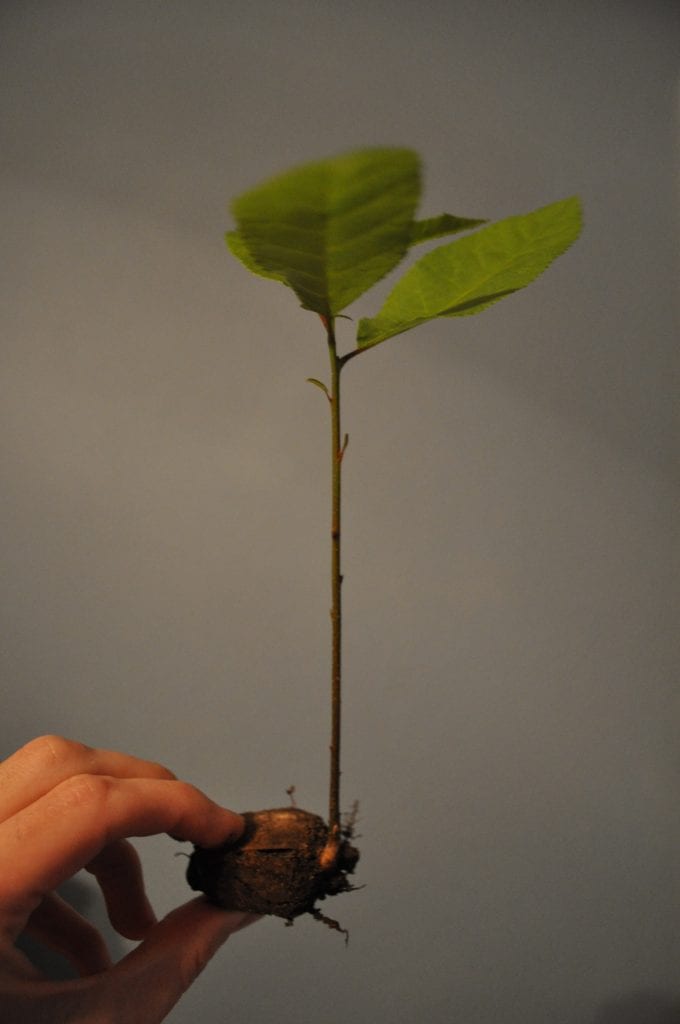Bareroot and Container Pecan Trees for Sale at our Pecan Tree Nursery
If you are looking for pecan trees for sale, contact Georgia Pecan Nursery. Settled in the heart of Valdosta, Georgia, you’ll find 140 acres of rich farmland dedicated to one thing: growing pecan trees. Our pecan tree nursery offers over 20 varieties of premium stock and we personally guarantee that each tree is true to the variety labeled. We strive to operate our business everyday with honesty and integrity while continuing to further our education of the pecan industry so we can better serve our customers. Our container pecan trees are ready for immediate pick, or you can place your orders now for our bareroot pecan trees. Learn more about our trees.
Planting pecan trees
Before you decide to add a pecan tree to your landscape there are some things to consider. Pecan trees are large trees, easily growing over time to reach 60 feet tall with a spread of 40 feet. Small urban lots are not large enough to accommodate these trees. So first make sure your site is large enough.
In addition, the wood of pecan trees is somewhat brittle. When a tree is heavily loaded with nuts, the weight and stress can cause branches to break and fall. You should not plant a pecan in a location where branches might fall on your house or other structures.
Pecan trees should be planted at least 20 feet (preferably more) away from homes, garages, driveways, etc.
The LSU AgCenter recommends several cultivars for home planting. These choices produce excellent quality pecans and have good to excellent resistance to scab disease. Select from the Elliot, Candy, Sumner, Houma, Caddo, Oconee and Melrose cultivars, as they are better suited for home landscapes.
Pecans must be cross-pollinated to produce well. Generally, there are enough pecan trees in an area for this to be accomplished if you plant just one tree.
Pecans are wind pollinated, and the pollen can travel some distance. However, if there are no pecan trees in your area, you should plant two different types — Elliot, Candy, Sumner or Melrose with either Houma, Caddo or Oconee.
Tips for planting pecan trees
Survival is usually better when you plant 4- to 5-foot trees grown in containers. Never allow the roots of the trees to dry out prior to planting.
Dig large holes two to three times the diameter of the root ball and the same depth.
Prune damaged and dead roots before planting. Place the rootball in the hole. Thoroughly pulverize the soil you removed to make the hole, and then use it to fill in the hole. Water the tree thoroughly to settle the soil.
It will be important to water young trees during periods of dry weather, especially during summer the first and even second years after planting.
Mulches should be used around newly planted trees to conserve moisture and prevent weeds.
Why pecan trees fail to bear
Some home gardeners are perplexed when their pecan trees fail to produce. First, you must consider the time since planting.
Pecan trees generally take 6 to 10 years after planting before they begin to produce good crops of nuts. Only time and patience can correct this issue.
Once trees become productive, it’s common for them to produce a large crop followed by a small crop — or no crop — in alternating years. While this is in the nature of pecan trees, it can be reduced by fertilizing annually.
Sometimes trees produce well, but the quality of the nuts leaves a lot to be desired. The pecans may be poorly filled or empty. Pest problems are the typical cause.
Healthy pecan tree leaves are essential
Think of a pecan tree as a very complex factory, where leaves are responsible for the food production which ultimately will be used in the production of nuts. It takes about 40 leaflets to set and fill out a single pecan nut.
During the growing season, foliage manufactures food materials which are translocated and stored in the root system for use the next spring for nut production. Early leaf loss results in a shortage of healthy leaves and limited or reduced nut production the next year.
Damage to foliage during the growing season also can reduce that year’s crop.
Early leaf loss can be the result of a combination of problems, especially a fungal disease called scab. It appears early on the leaves and nuts as small black lesions which later enlarge and completely blacken pecan leaves, eventually killing them and causing defoliation.
Scab also will attack and damage the shuck or outer covering of the pecan, resulting in a poorly filled or hollow pecan.
If you see numerous black spots, streaks on the shuck and poorly filled nuts, pecan scab is the problem.
Various foliar-feeding insects can compound problems. Aphids, mites and fall webworms attack pecan leaves, contributing to early defoliation.
The pecan cultivar dictates the severity of the pecan scab problem. Many of the older cultivars, such as Stuart, Success, Mahan and Desirable, are very susceptible to scab disease, while the cultivars mentioned at the beginning of this column are moderately to very resistant to the scab fungus.
Pecan cultivars not considered scab resistant only can be kept in production through the repeated application of fungicides throughout the growing season. The tree must be sprayed top to bottom.
Mature pecan trees are too large to be sprayed with conventional garden equipment to control diseases. This means you would have to hire a professional tree company to spray the tree several times during summer, which, of course, is not economically feasible.
So it’s best to plant resistant cultivars.
For maintaining productive pecan trees, another helpful factor is an annual application of fertilizer. Pecan trees should be fertilized in February with about 1 pound of a general purpose fertilizer following label directions. Do not fertilize young trees the first year they are in the ground.
Source: http://www.nola.com/homegarden/index.ssf/2014/12/how_to_grow_your_own_pecans_pl.html

